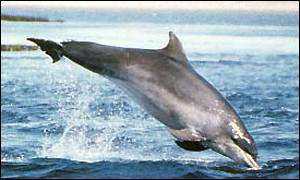|
The Porpoise and Dolphin Detector, or Pod, provides information about the animals' habits, enabling fishermen to avoid them.
The device, which was developed by marine scientist Dr Nick Tregenza of the Cornwall Wildlife Trust, contains an underwater microphone which can pick up sonar communications from mammals.
To do this, the Pod is anchored on the sea bed.
'Monitor movement'
Dr Tregenza said: "We started by looking at the sound of the dolphin which is like a high pitch drum beat and developed it.
"We can now monitor movement and numbers of dolphins in the area."
The Pod is currently being trialled off the Welsh coast.
Eventually it is hoped the device in Cornish waters.
On Tuesday a report by The Wildlife Trusts, which
represents 47 wildlife trusts across the UK, warned
that bottle-nosed dolphins could become extinct In
British waters within a decade.
The population off Cornwall is believed to have dropped
by two thirds in the last 10 years to about 350.
|

